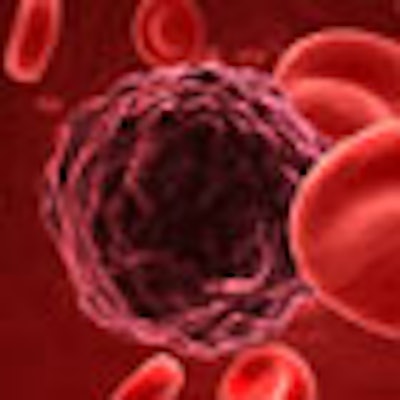
Periodontitis increases the risk of developing oral leukoplakia and mucosal lesions that are predisposed to become oral cancer, according to a study in Oral Oncology (September 2012, Vol. 48:9, pp. 859-863).
The findings provide clues into the complex relationship between systemic and local disease, noted the study authors from the University of Greifswald in Germany.
The development of oral cancer proceeds through discrete molecular changes that are acquired from loss of genomic integrity after continued exposure to environmental risk factors. It is preceded in the majority of cases by clinically evident, potentially malignant oral disorders, the most common of which is leukoplakia, the researchers noted.
Leukoplakia is an asymptomatic lesion in the oral mucosa. Oral cancer -- especially oral squamous cell carcinoma -- often develops out of these lesions, they added. Studies have shown that as many as 18% of oral premalignant lesions will develop into oral cancer. In addition, periodontal sites are often involved in proliferative types of leukoplakia.
The oral cancer rate attributed to leukoplakia is between six and 29 per 100,000, according to the authors. Smoking and drinking alcohol are the main risk factors for this disease, but acute infections in the oral cavity may contribute to the risk.
Inflammatory markers
The study evaluated 4,310 German residents ages 20 to79 from 1997 to 2001. After five years, 3,300 participants were available for follow-up.
The periodontal assessment included probing depth, clinical attachment loss, plaque, bleeding on probing, and the number of teeth. Among the study population, 123 (2.9%) of the participants had oral leukoplakia, compared with 246 people in the control group who did not have oral lesions.
Patients with oral leukoplakia showed significantly higher measures of periodontal parameters, especially bleeding on probing and gingival attachment loss, the study found. Despite a high variance, the leukoplakia group also exhibited a higher incidence of tooth loss, and there were more diabetics than in the control group (22% versus 13%).
Gingivitis (as characterized by bleeding on probing) is associated with the occurrence of leukoplakia in a dose-dependent manner, the researchers found.
"From the results it may be concluded that there is a continuously increasing risk of leukoplakia with increasing severity of periodontitis or gingivitis," they wrote. "Increased concentrations of inflammatory markers suggest that tissues irritated by defense processes such as periodontitis are vulnerable to premalignant transformations."
These study findings echo a 2011 study by researchers in India that showed elevated levels of salivary interleukin-6 -- which was used as a marker of malignant progression -- among patients with leukoplakia and periodontitis (Clinical Oral Investigations, October 2011, Vol. 15:5, pp. 705-714). Excluding people with periodontitis, the researchers found the leukoplakia cases still had elevated levels of systemic markers of inflammation. Good oral hygiene (brushing at least twice a day) was associated with decreased risk.
One limitation of the German study was that the oral lesions were not biopsied, the researchers noted.
"Our findings give new hints into the complex interrelationship between systemic and local diseases," they concluded. "Periodontal inflammation may be considered an additional risk acting synergistically with smoking and/or metabolic factors."



















